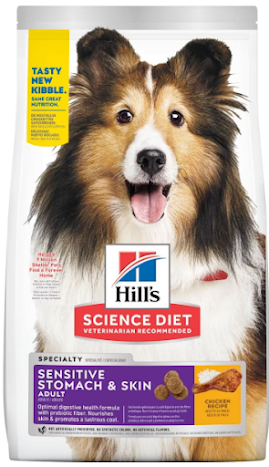Dermatology: AUTOIMMUNE/IMMUNE-MEDIATED
- Juvenile cellulitis/ puppy strangles supposedly caused by vaccine reaction however has not been proven. However there is a possibility of predisposition due to mother's nutrition or puppy nutrition prior to weening or due to selected formula after weening.
- Faces will swell up with cellulitis, crusty and oozing faces
- Middle dog has been treated with immunosuppressive doses of steroids for 4 weeks. Submandibular lymphodes get extremely large which can eventually cause strangling of puppy "puppy strangles"
- Not itchy
- However deep ulcers will develop
- History of dog: All started after a hike in the woods
- Lost cobble stone appearance, looks like we are crossing nasal planum into regular skin
- Immune related problem: Discoid Lupus Erythematosus or Pemphigus Foliaceus
- Plasma cells are infiltrating and pushing cells apart stretching the skin causing loss of cobble stone effect
- --Definition: Autoimmune skin disease primarily affecting the face and nose, causing localized depigmentation, scaling, and erosions.
- Appearance: Redness, crusting, depigmentation, erosions, ulceration, and sometimes scarring; typically affects the nasal planum, lips, and periocular areas.
- Triggers/Precipitating Factors:
- Genetic predisposition (certain breeds like Collies, German Shepherds, and Siberian Huskies)
- Sunlight/UV exposure (can exacerbate lesions)
- Dietary triggers: Food antigens or sensitivities may worsen immune-mediated reactions in some dogs.
- Management:
- Topical or systemic immunosuppressive therapy (corticosteroids, tacrolimus
- Sun protection (sunscreens or limited sun exposure)
- Supportive skin care and monitoring for secondary infections
- . Whatever triggers causes immune complexes.
Appearance: Crusts on the nose, depigmentation, erosions, or ulcerations. Ulcers in the center of the outer nose. Inflamed blood vessels and arteries cause an immune-mediated response which leads to inflammation within the skin and upon the outer skin of the nasal planum.
-
Potential Triggers:
-
Immune-mediated reactions
-
Environmental factors
-
Dietary triggers: Certain food antigens or intolerances may exacerbate immune responses. Common culprits include beef, dairy, wheat, or novel protein sensitivities.
-
-
Management:
-
Identify and eliminate dietary triggers
-
Supportive care for nasal lesions
-
Anti-inflammatory or immunosuppressive therapy if indicated
- Gold crust over muzzle and nose. Pustules, erosions, hair loss, and redness; commonly affects nose, foot pads, and ears.
- Losing cobble stone appearance, Top picture early stage. Bottom picture advanced stage
- Definition: Autoimmune disorder where the body attacks its own skin cells, causing blisters and pustules.
- Pemphigus foliaceus – most common; affects superficial skin layers.
- Pemphigus vulgaris – rare; deeper skin layers involved.
- Genetic predisposition
- Immune dysregulation
- Medications or infections
- Dietary triggers: Food antigens or sensitivities (e.g., beef, dairy, wheat, or novel proteins) may exacerbate immune responses.
- Immunosuppressive therapy (e.g., corticosteroids, cyclosporine)
- Treat secondary infections if present
- Supportive skin care
- Lesions on nasal planum, foot pads, and mucocutaneous junctions may indicate systemic autoimmune involvement, sometimes worsened by dietary triggers.
Hypotrichosis (Reduced Hair Growth in Dogs) and Mucocutaneous Pyoderma no gold crust
-
Definition: Partial or complete loss of hair or failure of hair to grow normally, often congenital or acquired.
-
Appearance: Sparse or absent hair, thinning coat, sometimes patchy alopecia; skin may appear normal or slightly thickened.
-
Causes/Triggers:
-
Genetic/congenital defects (certain breeds predisposed)
-
Endocrine disorders (e.g., hypothyroidism, Cushing’s disease)
-
Nutritional deficiencies (protein, essential fatty acids, zinc)
-
Dietary triggers: Inadequate nutrition or food sensitivities can exacerbate hair loss.
-
Chronic skin disease or inflammation
-
-
Management:
-
Treat underlying endocrine or nutritional deficiencies
-
Provide balanced diet with essential nutrients
-
Supportive skin and coat care
-
- Bacterial overgrowth (commonly Staphylococcus species)
- Underlying immune dysfunction or endocrine disorders
- Dietary triggers: Food antigens or sensitivities can exacerbate immune-mediated responses at mucocutaneous sites.
- Trauma or irritation at junctions
- Systemic or topical antibiotics based on culture/sensitivity
- Treat underlying predisposing factors
- Supportive care for erosions and ulcerations
- Immune-mediated diseases (e.g., pemphigus, lupus)
- Food toxicities or sensitivities
- Viral or bacterial infections
- Trauma or irritation
Ontario Association of Veterinary Technicians. (2022). [Dermatology]. Brought to you by OAVT Seminar.














Comments
Post a Comment